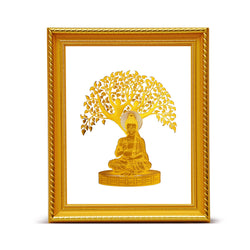Traditional puja at home is a sacred, spiritually enriching practice that brings peace, prosperity and divine blessings to your family.
From ancient Hindu traditions, puja can be done to worship the gods, to seek blessings for good health, or to create special festivals and celebrations. Although the customs vary according to local customs, the basic operations are the same.
Here is a guide to traditional puja steps to help you know how to perform puja at home with respect and honesty.
Choosing the right day and time
It is important to choose the right day and time or pivots to do the pooja. Check the Hindu calendar or panchang to identify the best time for your destination.
Note: Early morning and evening are considered the best time to do pooja as it is considered a time of spiritual relaxation.
Preparing the pooja place
Cleanliness is important while preparing the pooja place. Choose a clean, quiet place in your home, an altar or prayer room, where there are idols or pictures of deities.
Note: Clean the altar, idols and utensils you use in puja. Spread a clean cloth and arrange your pooja items properly. Lighting an oil lamp (diya) and incense (agarbatti) to purify the room.
Collect Pooja Materials
Before starting the Pooja, collect all the required materials. Common things:
- A sculpture or image of a god you worship.
- Fruits and sweets as offerings (known as prasad).
- Flowers and gifts for decoration and offering.
- betel nut leaves and nuts, kumkum, turmeric and sandalwood paste for prayers.
- Pooja Thali contains diya, incense, rice, water and bells.
Note: Some people prefer ready-made pooja kits that include all the essentials and ease of use.
Personal Preparation
The person doing puja should be clean and pure in body and mind. Before you start, take a shower and put on clean, light, old clothes.
Tip: Meditate for a few minutes or chant a simple mantra to calm your mind and prepare for prayer.
Sankalp (Vowing)
Sankalp is an important step to determine the intention and purpose of the puja. This can be done out loud or mentally.
Note: Sit quietly in front of God and sprinkle water on yourself and around the pooja area and show your sincerity and the purpose of the pooja.
Invocation of the God
Steps: Start the puja by invoking the chosen god. This is done through dhyaan (meditation) and chanting of certain mantras. If you worship many deities, mention Lord Ganesha first, as he is considered the destroyer of obstacles.
Note: You can recite simple mantras like "Om Gan Ganapataye Namah" for Lord Ganesha, "Om Namah Shivaya" for Lord Shiva. Follow specific mantras that you know or have been given by a guru.
Offer flowers, fruits and sweets
Offer new flowers, fruits and sweets to God with devotion. Place them in front of the idols and send them mentally as a sign of gratitude and love.
Note: When sending flowers, chant "Om" followed by the name of the deity you worship. You can also sprinkle it with water before sending it.
Light the Candle and Incense
Light the oil candle (dia) and incense sticks as a symbol to apply light and fragrance to your home. Diya symbolizes knowledge and wisdom, and incense purifies nature.
Note- While chanting a prayer or mantra, wave the diya in a circle in front of God.
Recitation of prayers and mantras
Read the prayers and mantras dedicated to God. This can be done by reading from a prayer book, singing Bhajan or simply meditating on the name of God.
Note: Even if you don't know the correct mantras, a simple prayer is chanting "Om" and the name of God with sincerity and concentration.
Function of Aarti
Function: Aarti is an important part of any puja. Apply camphor or ghee on the pooja thali and gently wave it in a circle in front of the God while singing the aarti.
Tip: Send Aarti to all family members to get blessings. Their hands touch the flame of the cup and bring it to their foreheads as a sign of respect.
Offer Water (Achamana)
Offer water to God, which symbolizes purity and respect. Take a small spoonful of water and pour it in front of God or sprinkle it around the pooja place.
Note: You can use the holy water of holy rivers like Ganga (Ganga Jal) for this ritual.
Distribution of Prasad
After the pooja, distribute fruits, sweets and other offerings as *Prasad* to the participants and members of the family. This is a blessed food that brings the grace of God.
Note: Make sure everyone shares the prasad, as this is a sign of shared blessings.
End the Pooja
Practice: End the Pooja by offering your last prayer and asking for divine blessings for your home and family. You can also touch the foot of an idol or deity to show humility.
Note: It is customary to bow before God as a sign of gratitude and submission.
Conclusion
Performing traditional puja at home is a beautiful way to connect with God and bring peace and happiness into your life. By following these important steps with sincerity and dedication, you can ensure that your home puja rituals are performed spiritually and in accordance with Hindu traditions.
Whether it's for a festival, a special occasion, or a daily ritual, performing puja is an effective way to maintain your spiritual practice and seek blessings for your family. Buy all kinds of Puja samagri online, only at Pujashoppe. Buy now.




